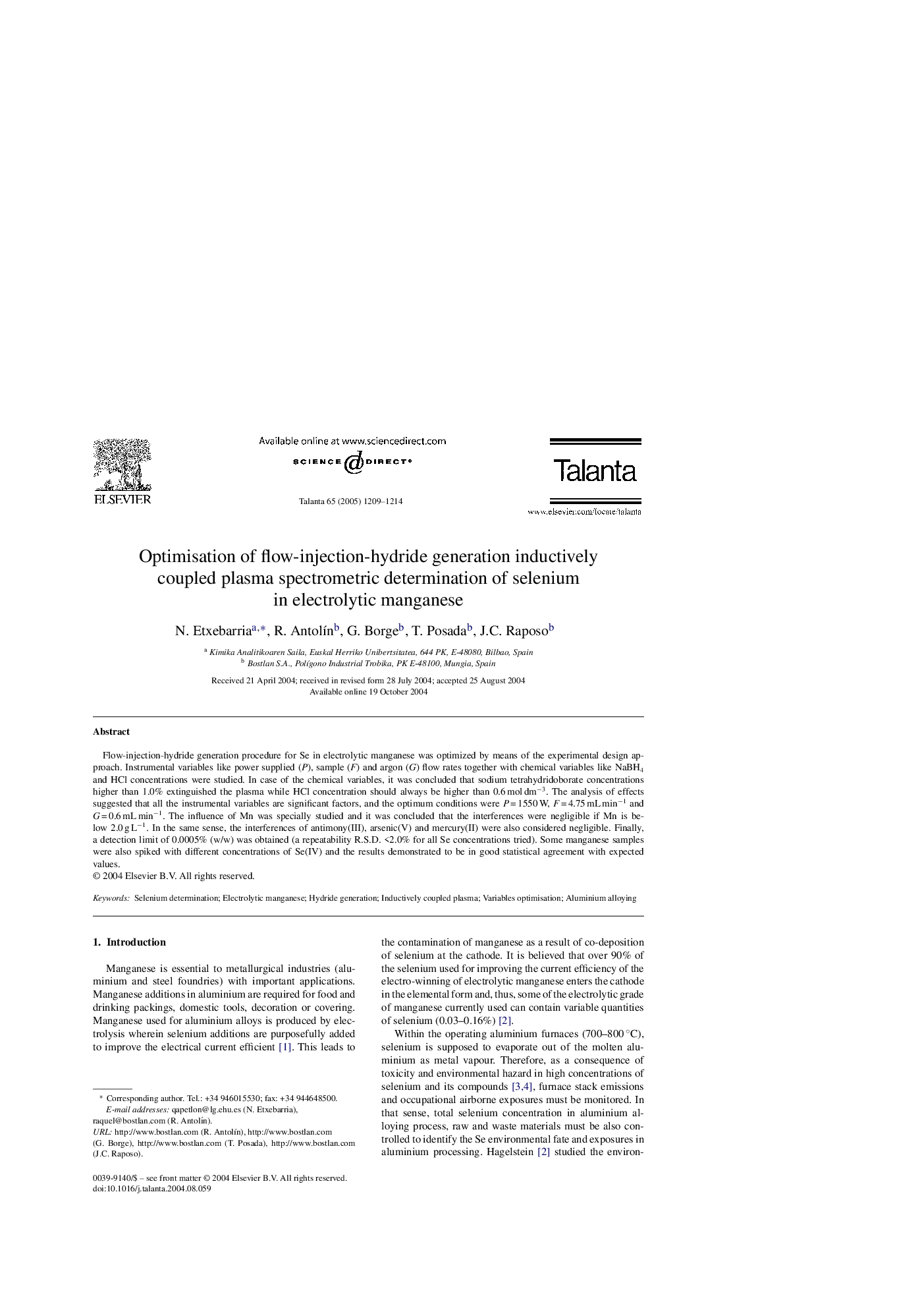| Article ID | Journal | Published Year | Pages | File Type |
|---|---|---|---|---|
| 10560921 | Talanta | 2005 | 6 Pages |
Abstract
Flow-injection-hydride generation procedure for Se in electrolytic manganese was optimized by means of the experimental design approach. Instrumental variables like power supplied (P), sample (F) and argon (G) flow rates together with chemical variables like NaBH4 and HCl concentrations were studied. In case of the chemical variables, it was concluded that sodium tetrahydridoborate concentrations higher than 1.0% extinguished the plasma while HCl concentration should always be higher than 0.6 mol dmâ3. The analysis of effects suggested that all the instrumental variables are significant factors, and the optimum conditions were P = 1550 W, F = 4.75 mL minâ1 and G = 0.6 mL minâ1. The influence of Mn was specially studied and it was concluded that the interferences were negligible if Mn is below 2.0 g Lâ1. In the same sense, the interferences of antimony(III), arsenic(V) and mercury(II) were also considered negligible. Finally, a detection limit of 0.0005% (w/w) was obtained (a repeatability R.S.D. <2.0% for all Se concentrations tried). Some manganese samples were also spiked with different concentrations of Se(IV) and the results demonstrated to be in good statistical agreement with expected values.
Related Topics
Physical Sciences and Engineering
Chemistry
Analytical Chemistry
Authors
N. Etxebarria, R. AntolÃn, G. Borge, T. Posada, J.C. Raposo,
